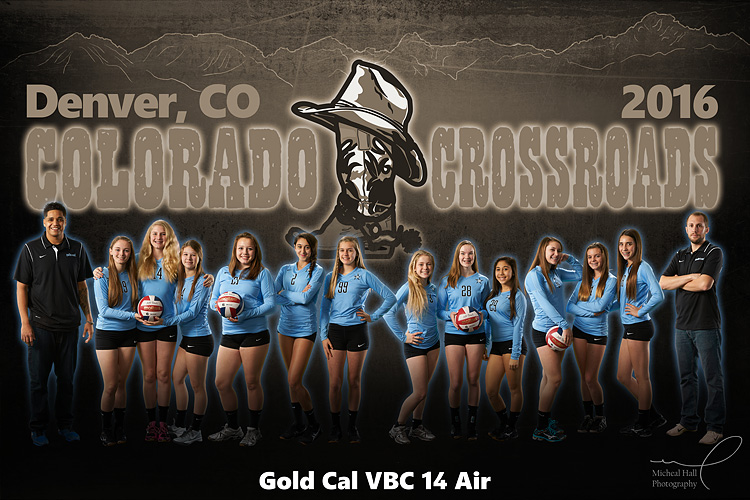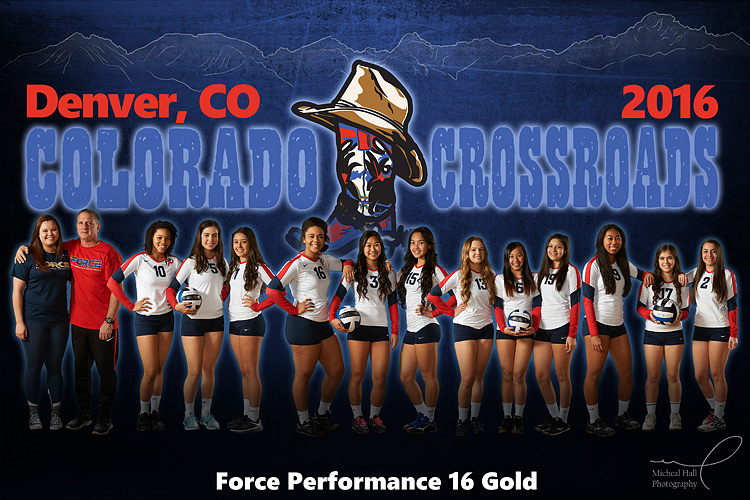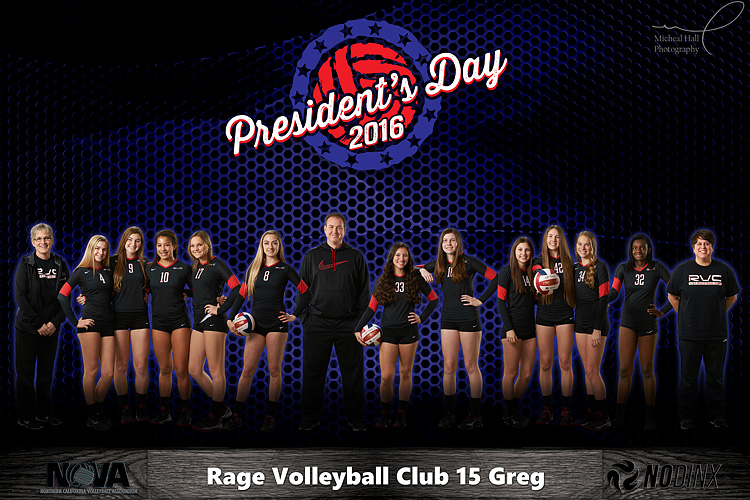What are you looking for in a photographer?
We are commonly asked what we are looking for in a volleyball photographer.
The answer is simple - we are looking for people like us.
We are looking for (in no particular order) people who ...
- ... bring very little personal ego to their work. We are not snobbish or elitist photographers. Our goal is to add value to the events we photograph - if our activities are a distraction or disruption to the activity, we stop. At the same time, we need to be able to assert our right to photograph the event if we are being unjustly stopped, but to do so diplomatically.
- ... really understand and like the sport of volleyball.
- ... like and are interested in other people.
- ... work hard.
- ... enjoy communicating with others.
- ... are dedicated to producing the best images they can.
- ... can work under less than ideal circumstances.
- ... can think on their feet, that can improvise or adapt when things aren't quite going as planned (photographers are given a schedule of teams to photograph, but this is a recommended schedule ... they may have to re-arrange/change things on the fly depending on actual play conditions).
- ... have a high degree of individual hustle.
Because we charge for the service of photographing a team, we need photographers that can deliver strong images in all sorts of circumstances. We need sharp, well timed, well composed images of action, jublilation, portraits, team huddles, etc. We need all aspects of a game photographed and we need a photographer that can do this for the entire team while keeping an eye on the specific athlete that has been requested.
We need 175 - 200 saleable images to result from each half hour coverage, of which at least 70% should be strong action. (Those are general targets - sometimes you just can't get there - but you do the best you can with the game in front of you.)
Our most popular products are overwhelmingly our collages - that requires a minimum of five strong images per athlete whenever possible (we know it's not always possible to get that many strong images of all athletes in a normal single game coverage). However, our coverages - on average - must result in more that just the one sale to the family that purchased the coverage. If they do not, we do not cover costs related to photographing that team.
What if I've never photographed volleyball?
This section applies before the start of the season. Once the season starts, I do not have time to train new photographers.
While ideally any photographers we hire would be experts in volleyball photography, we know that there actually aren't very many of those out there.
We weren't volleyball photographers when we got started in this either. We fell into it and developed our eye and technique as time went one.
If you've never photographed volleyball or have only photographed a bit of it and live in the Sacramento/San Joaquin valley area, there is hope. We're looking to put together some practice shooting dates here in Sacramento with some clubs that we commonly work with.
Basically this will involve heading out to a practice facility and drilling photographing different aspects of the sport, looking at the best shooting positions, lenses, etc.
Additionally, we have written a fairly extensive document on how we approach photographing volleyball, what we have found works, what we are looking for from a photographer who works with us (we'll supply a link to that), etc.
So, don't worry if you haven't photographed volleyball - we may be able to get you up to speed prior to the season starting. However, once the season starts, we won't have time for training, so - if you are interested get in touch now.
Will you provide gear, or do I need my own?
If you're being hired as a regular staff photographer, we do have a pool of gear that can be drawn from. If you are an independent photographer looking to work with us on an event by event basis, you will need to be able to supply your own gear.
We require gear along these lines:
- High end Nikon or Canon bodies - D750, D3s/D4/D4s, 1DIV/1Dx class bodies - are very well suited. We strongly prefer Nikon for the extremely low noise, great color and tonality. In convention centers where light levels do not require ISOs above 6400, the Nikon D3 and D700 are still completely acceptable as well.
- USM/AFS 70-200 2.8
- Wide to medium portrait zoom (such as the 24-120mm f/4) is very useful for some variation in looks.
We have found that, the bigger the sensor, the better. This is simply because of the limited space we have in each venue and the best general purpose lens we have worked with is the 70-200 2.8. On the smaller 1.5x and 1.6x crop factor sensors of Nikon and Canon bodies, this means that action which is closer is harder to capture. Sometimes, even at 70mm, on a 1.5/1.6x crop factor camera, an image of the setter from head to toe is impossible to capture. So we prefer the use full frame cameras such as the D3s/D4s or the 1Dx. We have recently added several Nikon D750s to our mix as well and they are performing extremely well.
You will usually be shooting a minimum of ISO 3200-6400 at f/2.8, so we absolutely need cameras which perform well at higher ISOs.
Regardless of what equipment you shoot with, it MUST be able to output RAW+JPG files at the same time.
Basic Shooting Conditions/Settings
Our photography usually takes place in very crowded convention centers. Light level is often low (relative to the need to stop action) and light color/quality is erratic based on the type of lights, age of lights and the cyclic nature of the light fixture itself.
So - much as it would make our job easier - we do not photograph in gorgeous stadiums with TV quality lighting. But, we do our best with what we have and still aim to deliver the highest quality possible to our customers.
We usually shoot along the following lines:
- RAW + JPG shooting. The JPGs are usually medium JPGs (large for us is overkill). We use the JPGs for display on the viewing stations and RAW for processing the final prints and collages.
- No flash is ever used.
- We typically shoot Auto White Balance. Per the lighting challenges listed above, makes a fixed white balance such as fluorescent or a Kelvin setting or even a custom white balance useless. Typically AWB gets us close enough for display purposes. We custom adjust every image prior to printing, which is why we require RAW files.
- Manual metering. Each court is individually metered and exposed accordingly. Typically in a good convention center courts are within 1/3 stop of each other. However, there are times where the difference is as much as a full stop to 1 1/2 stops.
- Manual AF point selection, with AF point expansion/Group AF enabled.
Exposure is critical in achieving a high quality image. Underexposure leads to unnecessary noise and loss of tonal and color fidelity. Not only that, but improperly exposed photographs, even if they can be salvaged in a RAW converter, do not sell very well. So, it is crucial to get the exposure accurate as possible - the use of RGB histograms is highly recommended to make sure that each channel is getting as much data as possible without blowing it out.
Our goal is to offer the highest quality we can based on the conditions in which we photograph. So good exposure, frame filling composition and peak action, great timing, good color and low noise are all important.
How will I know who to photograph?
We typically photograph by paid request only, so we will provide you with a schedule of shooting assignments.
However, in cases where we are not photographing paid requests, we will usually assign a block of courts to you and allow you to elect which teams to "pick up" or shoot on speculation.
To learn more about the types of coverages we offer, you can read about them here.
Team Booth Photographer
We have recently added a green screen booth to our services and could really use help from a photographer with great people skills and the ability to work quickly with many people.
These team photographs are actually composites made up of 4-6 images. Each image features 2-3 atheletes or a coach. The images are extracted from the green screen and composited into a final image with a custom tournament background.
The layout style allows for a good amount of freedom in posing - limited by the fact that this is a strongly horizontal layout and all athletes must be standing.




Technically, the lighting, camera position/settings are all locked down tightly to make processing easier (camera on a tripod, focal length and composition fixed, camera can be released with a wireless remote, etc.). This frees the photographer to be able to focus solely on interacting with the athletes, posing, timing, etc.
To learn more about how we are approaching this service , you can read about them here.
This is a new service as of 2016 and we do not know how busy it will be. The events we work with are actively helping to promote the service and we hope it will be a hit.
What about photography rights?
We are interested in hiring photographers in a Work For Hire arrangement.
When photographing, you will be doing so as a hired employee/contractor and all commercial rights to images will be assigned to Micheal Hall Photography.
We are not interested in a rights grab, but we want there to be no confusion as to ownership of the images, and considering the age of the athletes (12-18 years old) we need to maintain control of where/how the images are used.
We have done the work to create the business and opportunity for photography to occur. We are investing time, money, potentially training, travel, housing, food, etc. In exchange, we require clear and undisputable ownership of the images with the ability to display, sell and use for promotion any image taken during the tournament as part of our services.
Schedule & Breaks
Depending on the tournament, photography typically starts at 8:00am and ends at about 9:00 - 10:00pm.
Typically there are two waves of play - 8:00am - 2:00pm and 3:00pm to ... whenever. Practically speaking, due to game delays, longer games, etc. that first wave can often push right into the beginning of the second wave, meaning no break in between.
As a photographer, your primary responsibility is the capture of great images. That means we need you courtside as much as possible. On average, we ourselves usually photograph anywhere from 15-20 games per day. We expect photographers coming out to work with us to be able to photograph a minimum of 15 games per day. As each game works out to about 30 minutes on average, that's about 7 1/2 hours of actual, courtside photography time throughout the day. We'd be thrilled if you do more - and it's being able to exceed targets like that which can help us meet income targets that allow us to pay out bonuses.
However, we also know that good photography requires a well rested and well fed photographer. We will do our best to schedule time for a 1/2 hour lunch break. We recommend bringing some snack bars, or nuts or other things like this to keep in your camera bag. Other breaks throughout the day can be grabbed during gaps in your schedule.
We also try to have a booth staff member make the rounds to bring our water or other snacks at various times of the day. We aren't out to torture anyone, but our window of opportunity for photography income is narrow and the photographers are usually the hardest hit by this.
